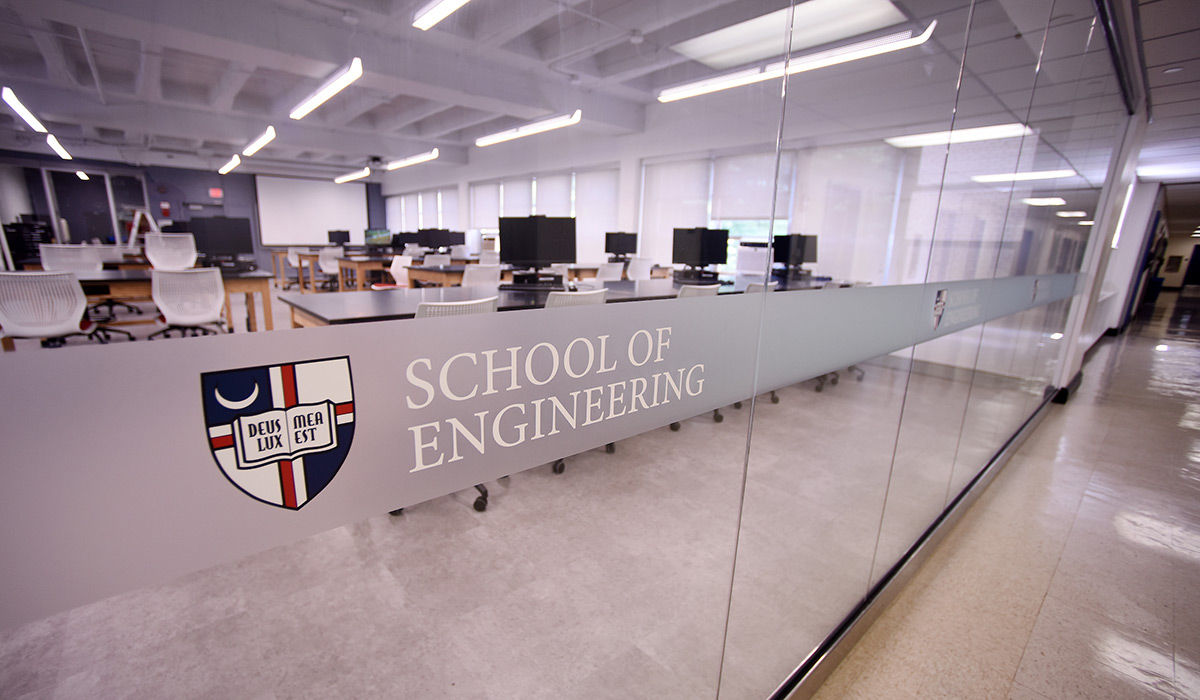

Faced with a global pandemic of staggering dimensions, some Catholic University professors are asking themselves: “What can we learn from this?” Two professors in the School of Engineering, Binh Tran and Jason Davison, have quickly adjusted their course syllabi to incorporate lessons and projects.
Tran, an associate professor of biomedical engineering, teaches an engineering mathematics course on differential equations. As part of that course, he teaches students about computer modeling and how it can be used to predict and track the spread of diseases across specific populations. In the past, Tran has assigned students to create models predicting the progress of ebola or measles. This year, the obvious choice has been to track the quick spread of COVID-19.
“We always try to model what’s going on in the real world,” said Tran. “This allows students to understand, as they watch the news and see the various models presented, where these data sets and estimates are coming from.”
Sophomore Anthony Grieco said that studying the infectious disease models helped him understand how complex the COVID-19 outbreak really is.
“Our models were fairly simple, but within the differential equations and their relations to one another, I was able to see how different real-world phenomena are accounted for within the model,” Grieco said. “It also demonstrated how many more factors there are in real life, like mortality rates, susceptible populations, and geographical hotspots. Researchers need to find ways to adjust their models to include these types of factors in order to best inform governments and the general public.”
“The models we created through MatLAB were able to be manipulated to see the difference of how several roles affected the spread of COVID-19, like how social distancing would make such a drastic change in the model,” said sophomore Erin Novak. “Dr. Tran showed how differential equations can be used in modeling today's issues or how we can use models to better inform and help society.”
Davison, an assistant professor of civil and environmental engineering, has also incorporated the coronavirus into his senior design course. Normally, students in the two-semester course spend the entire year working in groups to complete one design project. Faced with the knowledge that all classes would be moving online and physical interactions between students would be limited, Davison asked his students to wrap up their previously planned projects at the beginning of April. For the rest of the semester, he assigned students to conceive and design projects finding solutions to problems caused by the coronavirus outbreak.
“What I want them to do is try and solve a problem in their community or their life using their engineering mindset,” Davison said. “Whether it’s turning a basketball court into a classroom or finding a solution to the supply chain problems, I want their solutions to be engineering-focused, using math or modeling, and coming up with some kind of design.”
Design projects proposed by the students included a social distancing mobile app, an educational website for children, voice-activated elevator buttons to cut down on surface contact, temporary hospital structures, no-contact food delivery systems, and redesigned grocery stores that would encourage social distancing.
“In Civil Engineering we are always designing things for humans and we need to keep that in mind,” Davison said. “Even though the COVID-19 virus is a biological thing, the main thing we are looking at in class is the relationship between the built and physical environment and how humans interact within those two realms. I hope that students realize engineering is about building relationships and working together to help others.”